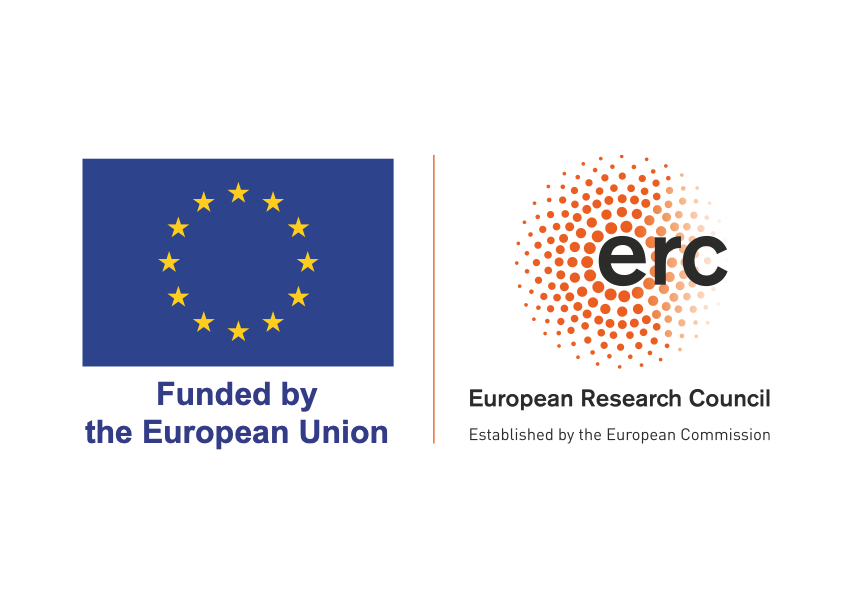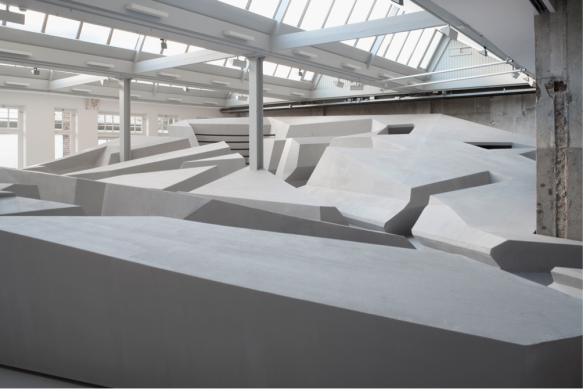I am thrilled to announce that I have been awarded an ERC Starting Grant for a large five year philosophical research project on affordances and skilled action!
My project is titled: “Skilled Intentionality for ‘Higher’ Embodied Cognition: Joining forces with a field of affordances in flux.”
Many thanks to the colleagues and friends who gave feedback on my draft proposal and presentation as well as all the co-authors on the different articles that have laid the foundation for this new step!

Read a summary of the project here:
Skilled Intentionality for ‘Higher’ Embodied Cognition: Joining forces with a field of affordances in flux
Introduction
It is often assumed that the increasingly influential paradigm of embodied/enactive cognitive science (Chemero, 2009; Noë, 2012; Thompson, 2007; Di Paolo, Rohde,& De Jaegher, 2013) has sensible things to say about so-called ‘lower’ cognition (say grasping a glass or riding a bike), but not about ‘higher’ cognition (say using creative imagination or comforting a sad friend). It is thought that embodied/enactive cognitive science can deal only with the immediately present environment but not with the absent or the abstract, such as for example a plan for a new building. I believe these dichotomies are largely artificial (Rietveld & Brouwers, forthcoming).
Much of what others have characterized as ‘lower’ cognition and ‘higher’ cognition, can actually be regarded as skilled activities (Ingold, 2013; Noë, 2012) situated in socio-cultural practices (Wittgenstein, 1953; Rietveld, 2008a, Mind). I seek an account of such situated skilled activities that is more unified than the dichotomy it replaces. These skilled activities are best understood as responsiveness to affordances. Affordances are possibilities for action provided to us by the environment (Gibson, 1979; Chemero, 2009; Reed, 1996; Costall, 1995; Heft, 2001). I have suggested that affordances are also significant for cases of ‘higher’ cognition (Rietveld & Kiverstein, 2014; Rietveld, 2008a; Klaasen, Rietveld & Topal, 2010; see also Rietveld & Brouwers, forthcoming, for ethnographic observations that support this idea.).

If we want to understand the relation between mind and world, skilled intentionality is crudial (Rietveld, 2013; Bruineberg & Rietveld, 2014), because it is the kind of intentionality that characterizes most of the things individuals do in everyday human life, in skilled animal actions (Ingold, 2001) and in expert activities. I have defined skilled intentionality as the simultaneous coordination with multiple affordances (Rietveld, 2013; Bruineberg & Rietveld, 2014; Kiverstein & Rietveld, 2015; Rietveld & Brouwers, in press). It is not an exceptional type of cognition, but the norm.
Since 2006 I have collaborated intensively with architects in their practice to develop a deep understanding of their skilled activities (Rietveld, 2008a; Rietveld et al., 2014; Rietveld & Brouwers, forthcoming; Rietveld et al., 2015, Harvard Design Magazine), and with psychiatrists working on Deep Brain Stimulation treatment to understand how patients experience a breakdown of everyday skillful unreflective action (Rietveld, De Haan & Denys, 2013, BBS). Based on these collaborations I have developed the two central ideas behind my ERC Starting Grant-project:
- context-sensitive episodes of ‘higher’ cognition can be understood as responsiveness to affordances along the same lines as everyday skillful unreflective activities, such as grasping a glass or riding a bike; and
- the human environment is highly resourceful and contributes to skillful action and cognition in a far more fundamental way than is generally acknowledged within philosophy and cognitive science.
Aim
The overarching aim of my philosophical ERC-project for the next five years is to develop an affordance-based conceptual framework of what I will refer to as skilled intentionality. This Skilled Intentionality Framework (SIF) will significantly extend the scope of embodied/enactive cognitive science (Thompson, 2007; Chemero, 2009; Noë, 2012; Di Paolo et al., 2010; Hutto & Myin, 2012), integrating both ‘lower’ and ‘higher’ cognition. My ambitious longer term (year 2025) aim is to investigate if, starting from our improved definition of affordances, it is possible to understand the entire spectrum of things that people do skillfully in terms of one conceptual framework, that of selective engagement with multiple affordances simultaneously (i.e. the SIF).
The Skilled Intentionality Framework (SIF)
In a series of papers I have together with the people in my VIDI-research group indicated how such responsiveness to affordances can be analyzed at multiple levels: philosophical/phenomenological, ecological/biological, affective, and neural (Rietveld, 2008a/b, 2010, 2014; Rietveld & Kiverstein, 2014; Frijda, Ridderinkhof & Rietveld, 2014; Rietveld, De Haan & Denys, 2013; De Haan, Rietveld, Stokhof & Denys, 2013; Bruineberg & Rietveld, 2014). The results are promising and we are now in a position to take the next step: linking the different fields of research and investigating multiple time-scales.

All sorts of activities – both actions in everyday life and episodes of expertise – are forms of skilled engagement with the environment and can be understood in terms of responsiveness to relevant affordances. A central idea in my approach is that the landscape of affordances that surrounds us is much richer than is generally assumed. This central idea stems from of a new Wittgensteinian interpretation of Gibson’s (1979) notion of affordances (Rietveld & Kiverstein, 2014; cf. Chemero, 2009). I argue for a definition of affordances as relations between (a) aspects of the (socio)material environment in flux, and (b) abilities available in a ‘form of life’ (Wittgenstein, 1953), which includes socio-cultural practices in our human ecological niche. The resourcefulness of the landscape of affordances in this niche has everything to do with the wide variety of both the environmental aspects and the abilities and practices we have for engaging with our environment.
Traditionally in philosophy and cognitive science, so-called ‘higher’ cognitive capacities have been associated more with types of rationality and decision-making tied to language, than with unreflective action. This has left the characteristic phenomenon of context-sensitive intuitive expertise unexplained (Varela, 1992/1999; Haselager & Van Rappard, 1998; Mesquita et al., 2010; cf. Wheeler, 2005). Crucially, the Skilled Intentionality Framework (SIF) makes it possible to apply findings that were thought to be exclusively valid for everyday skillful unreflective action to skillful ‘higher’ cognition, including linguistic and reflective activities, which can also be analyzed as skilled responsiveness to a rich landscape of affordances.
 Figure: Sketch of SIF, the framework to be developed. Skilled intentionality is the tendency towards grip on a field of relevant affordances in flux. Numbers refer to the different (sub)projects to be carried out. Note that level of the ecological niche (the landscape of affordances on the left) is related to the active individual and her states of bodily action readiness (on the right) via the phenomenological notion of the field of relevant affordances (in the middle of the figure). Adapted from Rietveld, 2013; Bruineberg & Rietveld, 2014.
Figure: Sketch of SIF, the framework to be developed. Skilled intentionality is the tendency towards grip on a field of relevant affordances in flux. Numbers refer to the different (sub)projects to be carried out. Note that level of the ecological niche (the landscape of affordances on the left) is related to the active individual and her states of bodily action readiness (on the right) via the phenomenological notion of the field of relevant affordances (in the middle of the figure). Adapted from Rietveld, 2013; Bruineberg & Rietveld, 2014.
A central idea behind my research over the last decade has been that a person typically tends towards an optimal grip (Merleau-Ponty, 1945/2002; Dreyfus, 2005; Dreyfus & Kelly, 2007; Rietveld, 2008c, 2012, 2013) on the various relevant affordances encountered in a particular situation. To a person with the necessary skills, Jelle Bruineberg and I (2014) have suggested, a relevant affordance generates a state of bodily ‘action readiness’ (cf. Frijda, 2007). We can understand the tendency toward an optimal grip on the situation as the tendency toward an optimal metastable attunement to the dynamics of an environment in flux (Bruineberg & Rietveld, 2014; cf. Hristovski, Davids, and Araujo, 2009; Freeman, 2000). This optimal readiness to switch rapidly between behavioral patterns is both functional with respect to the demands of the environment and the needs or concerns of the organism in the particular situation. In the ERC project the research team will show and develop SIF’s relevance for contextualizing Karl Friston’s (2011; 1997) work on the metastable and anticipating brain, and apply it in the domain of enactive architecture and public health in collaboration with the multidisciplinary practice RAAAF [Rietveld Architecture-Art-Affordances].
Conclusion
The Skilled Intentionality Framework is innovative in integrating several carefully developed concepts that together succeed in relating findings established at several complementary levels of analysis: philosophy/phenomenology, ecological psychology, affective science and neurodynamics. Relevant affordance related states of action readiness are of central importance in this framework. Empirical findings on affordance responsiveness thought to be exclusively valid for everyday unreflective action can now be used to explain skilled ‘higher’ cognition as well. Moreover, SIF brings both the context and the social back into cognitive science in a fundamental way, namely via the notion of the landscape of affordances in which our actions are situated. SIF will radically widen the scope of the increasingly influential field of embodied/enactive cognitive science.
References
Bruineberg, J. & Rietveld, E. (2014) Self-organization, free energy minimization, and optimal grip on a field of affordances. Frontiers in Human Neuroscience 8 (599), pp. 1-14.
Chemero, A. (2009), Radical Embodied Cognitive Science. Cambridge, MA: MIT Press.
Costall, A. (1995), Socializing affordances. Theory & Psychology 5 (4), pp. 467-481.
Davids, K., Araújo, D., Hristovski, R., Passos, P., & Chow, J. Y. (2012), Ecological dynamics and motor learning design in sport. In N. H. Mark Williams (Ed.), Skill acquisition in sport: Research, theory & practice. London: Routledge, 2nd ed., pp. 112-130.
De Haan, S., Rietveld, E., Stokhof, M. & Denys, D. (2013). The phenomenology of deep brain stimulation-induced changes in OCD: an enactive affordance-based model. Frontiers in Human Neuroscience 7 (653), pp. 1-14.
Di Paolo, E.A., Rohde, M., & De Jaegher, H. (2010), Horizons for the enactive mind: Values, social interaction, and play. In Steward, J., Gapenne, O. & Di Paolo, E.A. (eds.), Enaction: Toward a New Paradigm for Cognitive Science. Cambridge, MA: MIT Press, pp. 33-87.
Dreyfus, H.L. (2008), Why Heideggerian AI failed and how fixing it would require making it more Heideggerian. In Husbands, P., Holland, O. & Wheeler, M. (eds), The Mechanical Mind in History. Cambridge, MA: MIT Press, pp. 331-71.
Dreyfus, H.L. & Kelly, S.D. (2007), Heterophenomenology: Heavy-handed sleight-of-hand. Phenomenology and the Cognitive Sciences 6 (1-2), pp. 45-55.
Freeman, W.J. (2000), How Brains Make Up Their Minds. New York: Columbia University Press.
Frijda, N.H. (2007), The Laws of Emotion. Mahwah, NJ: Lawrence Erlbaum Associates, Inc.
Frijda, N.H., Ridderinkhof, K.R. & Rietveld, E. (2014), Impulsive action: emotional impulses and their control. Frontiers in Psychology 5 (518), pp. 1-9.
Friston, K.J. (1997), Transients, metastability, and neuronal dynamics. Neuroimage 5 (2), pp. 164-171.
Friston, K.J. (2011), Embodied inference.In Tschacher, W. & Bergomi, C. (eds.), The Implications of Embodiment (Cognition and Communication). Exeter: Imprint Academic, pp. 89-125.
Gibson, J.J. (1979), The Ecological Approach to Visual Perception. Boston: Houghton Lifflin.
Haselager, W.F.G. & Van Rappard, J.F.H., (1998), Connectionism, Systematicity, and the Frame Problem. Minds and Machines 8 (2), pp. 161-79.
Heft, H. (2001), Ecological Psychology in Context: James Gibson, Roger Barker, and the Legacy of William James’s Radical Empiricism. Hillsdale, NJ: Lawrence Erlbaum Associates.
Hristovski, R., Davids, K. W., and Araujo, D. (2009), “Information for regulating action in sport: metastability and emergence of tactical solutions under ecological constraints,” in D. Araujo et al. (eds.), Perspectives on Cognition and Action in Sport. Hauppauge: Nova Science, 1st Ed., pp. 43–57.
Hutto, D. & Myin, E. (2012), Radicalizing Enactivism: Basic Minds Without Content. Cambrige: MIT Press.
Ingold, T. (2013), Making: Anthropology, Archaeology, Art and Architecture. New York: Routledge.
Kiverstein, J. & Rietveld, E. (forthcoming 2015) The Primacy of Skilled Intentionality: On Hutto & Satne’s The Natural Origins of Content. Philosophia 43 (3).
Merleau-Ponty, M. (1945/2002), Phenomenology of Perception (Smith, C., trans.). London: Routledge.
Mesquita, B., Barrett, L.F. & Smith E.R. (2010), The Mind in Context. London: Guilford Press.
Noë, A. (2012). Varieties of presence. Harvard University Press.
Reed, E. S. (1996), Encountering the world: Toward an ecological psychology. Oxford: Oxford University Press.
Rietveld, E. (2008c), Unreflective Action. A Philosophical Contribution to Integrative Neuroscience. University of Amsterdam Dissertation. Amsterdam: ILLC-Dissertation Series DS-2008-05.
Rietveld, E. (2010), McDowell and Dreyfus on unreflective action. Inquiry 53 (2), pp. 183-207.
Rietveld, E. (2013). Skilled intentionality for ‘higher’ cognition. unpublished lecture at conference. The Reach of REC, Antwerp, June 18th 2013.
Rietveld, E. & Brouwers, A.A. (2016) Optimal grip on affordances in architectural design practices: An ethnography. Phenomenology and the Cognitive Sciences, doi: 10.1007/s11097-016-9475-x See also this earlier post.
Rietveld, E. & Kiverstein, J. (2014). A rich landscape of affordances. Ecological Psychology 26 (4), pp. 325-352.
Rietveld, E., De Haan, S. & Denys, D. (2013). Social affordances in context: What is it that we are bodily responsive to? Invited commentary article on Leo Schilbach et al. BBS, Behavioral and Brain Sciences, p. 436.
Rietveld, E., Rietveld, R., Mackic, A., Van Waalwijk van Doorn, E., Bervoets, B. (2015), The End of Sitting, Harvard Design Magazine 40, pp. 180-181. See also this earlier post.
Rietveld, R., Rietveld, E., Zoeteman, M. & Mackic, A. (eds.) (2014), Vacancy Studies: Experiments & Strategic Interventions in Architecture. Rotterdam: nai010 Publishers. (Find three open access chapters here.)
Thompson, E. (2007), Mind in Life: Biology, Phenomenology, and the Sciences of Mind. Cambridge MA: The Belknap Press of Harvard University Press.
Varela, F.J. (1992/1999), Ethical Know-How: Action, Wisdom, and Cognition. Stanford: SUP.
Wheeler, M. (2005), Reconstructing the Cognitive World: The Next Step. Cambridge, MA: MIT Press.
Wittgenstein, L. (1953), Philosophical Investigations. Oxford: Blackwell.

